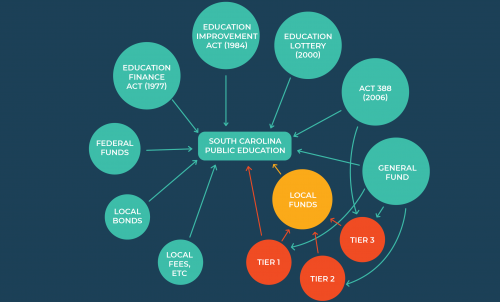Fixing South Carolina’s Education Finance Foundation
“South Carolina’s educational funding scheme is a fractured formula denying students…constitutionally required opportunity.” – South Carolina Supreme Court
PROBLEM 1: South Carolina’s overall academic performance is poor…and falling below Mississippi.
- South Carolina is at—or near—the bottom of every major national ranking of education outcomes.
- In 2017-18, 2/3rds of 3rd-8th graders did not meet grade level expectations for both English and Math on state tests
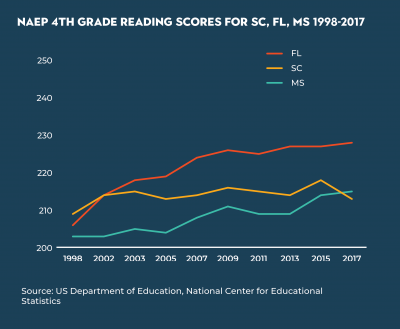
PROBLEM 2: South Carolina’s per pupil and administrative expenditures are high, compared to our competing neighbor states.
- South Carolina spent $9.9 billion in federal, state, and local education dollars in 2018-19, or $13,659 per student, according to the SC Revenue and Fiscal Affairs Office estimates.
- K-12 education spending represents 20% of South Carolina’s general fund budget.
In FY 2019-20, South Carolina invested $295 million in new education spending, with $159 million going to teacher pay increases.
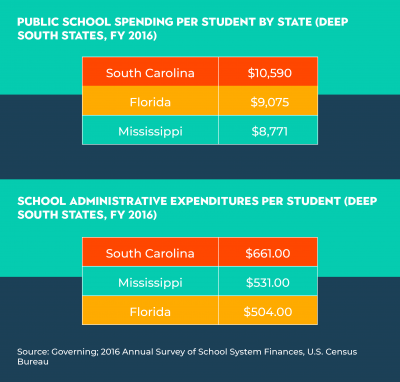
PROBLEM 3: South Carolina’s spider web of funding is one of the most complex in the nation.
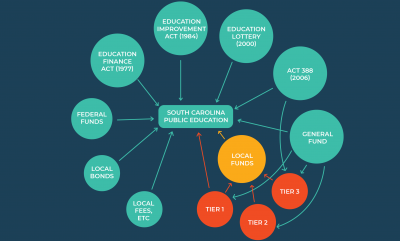
Our “fractured formula” is failing students:
- Expenditures are not directly tied to actual student costs.
- Revenue streams are unstable and unpredictable, causing significant budgeting challenges.
- Overly complicated funding formulas lack transparency and disguise inefficiency.
- Current cost-sharing formulas do not promote fairness across districts.
THE SOLUTION: Refocus funding on students. Restore the power of the Education Finance Act.
South Carolina’s Education Finance Act (EFA) of 1977 was built around the specific needs of specific children. However, nearly three-fifths of what South Carolina spends on education is now provided outside of the EFA, and not tied to the number or types of students served.
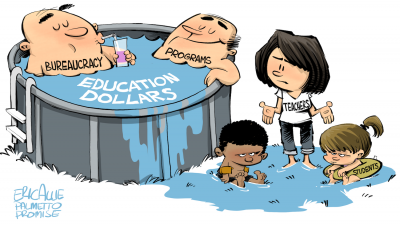
Student-centered funding would restore the original power of the EFA by providing the bulk of state education funding for each student based on his or her needs.
This would redirect dollars out of bureaucracies and well-meaning but ineffective programs and put those dollars back into classrooms to better support teachers and student learning.
Three keys for student-centered finance reform
Flexibility
Streamline funding, reduce paperwork, and increase autonomy to empower teachers and school leaders to innovate at the local level and meet the unique needs of their students and community. Make principals the CEO of their school and teachers the CEO of their classroom.
Transparency
Create clear, meaningful accountability for taxpayers’ investment and student outcomes. Student success is what matters.
Fairness
Provide equal opportunity for students, across rural and urban districts and between different types of education options.
STREAMLINE FUNDING | SHRINK BUREAUCRACY | EMPOWER SCHOOLS
SPEND SMART, NOT MORE
